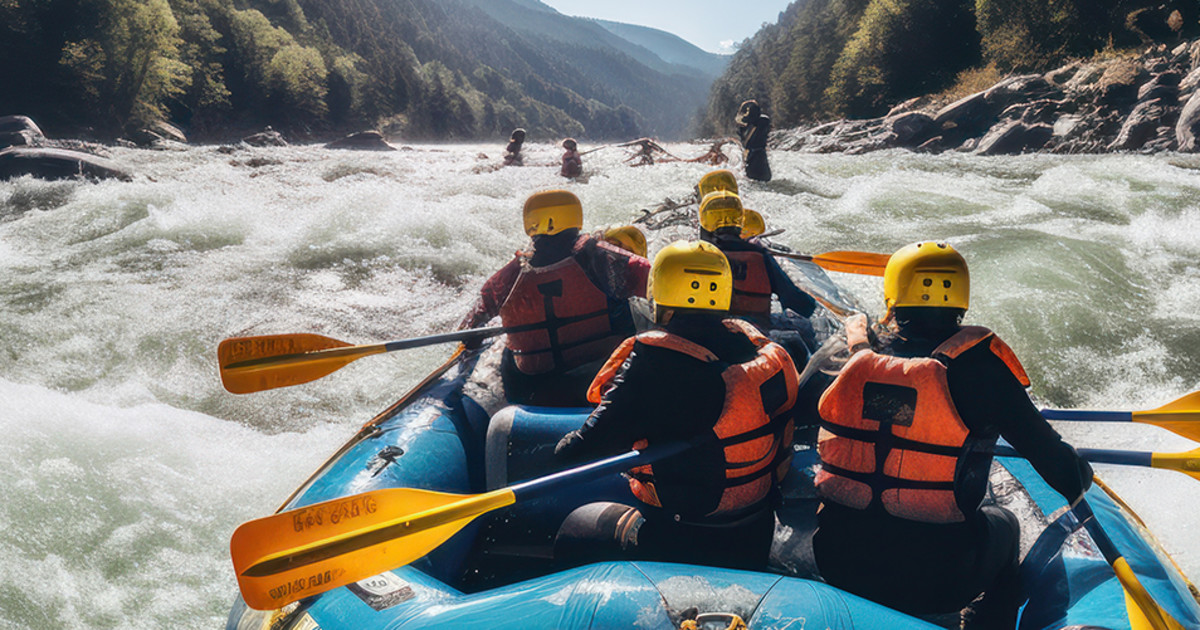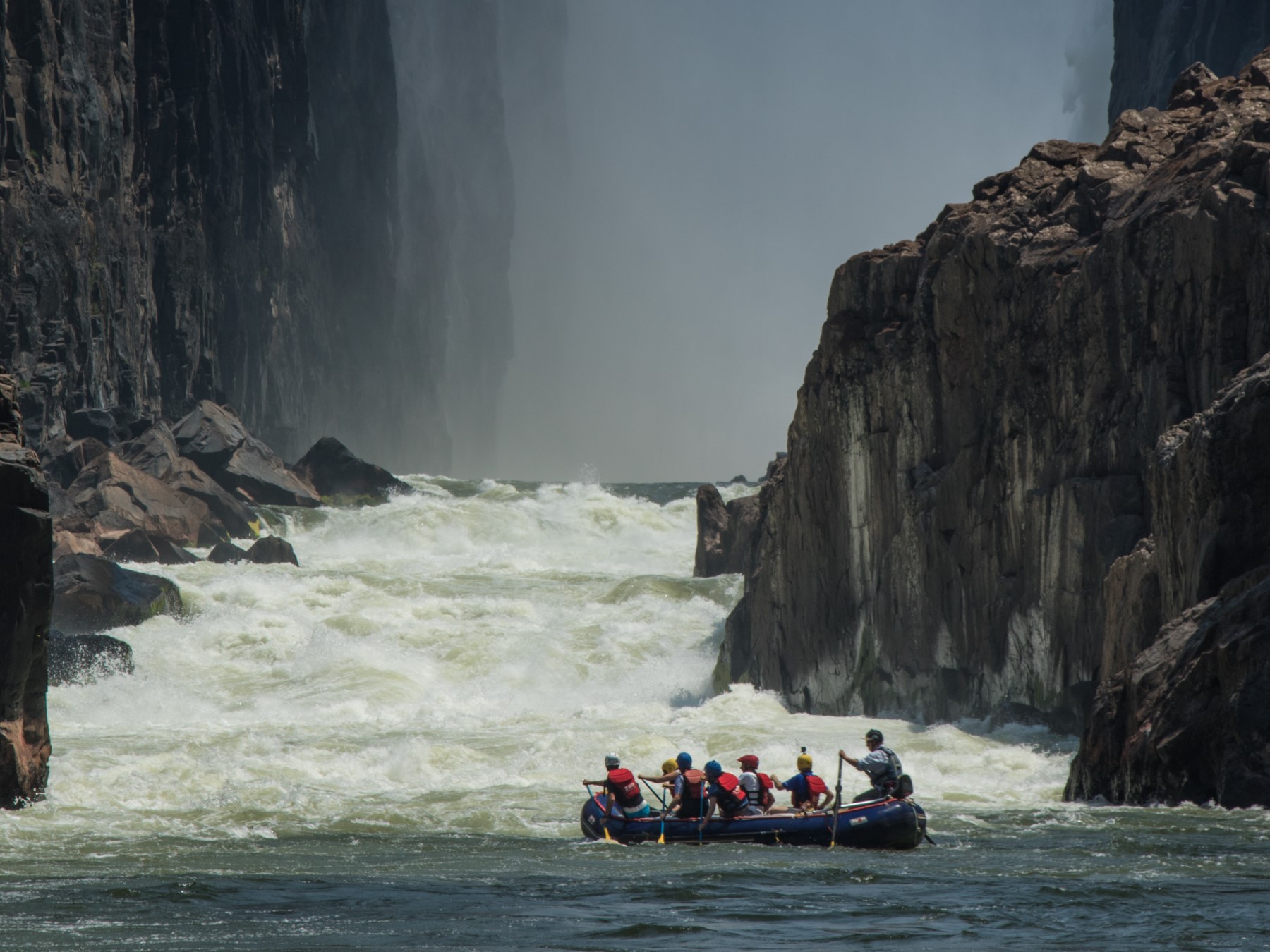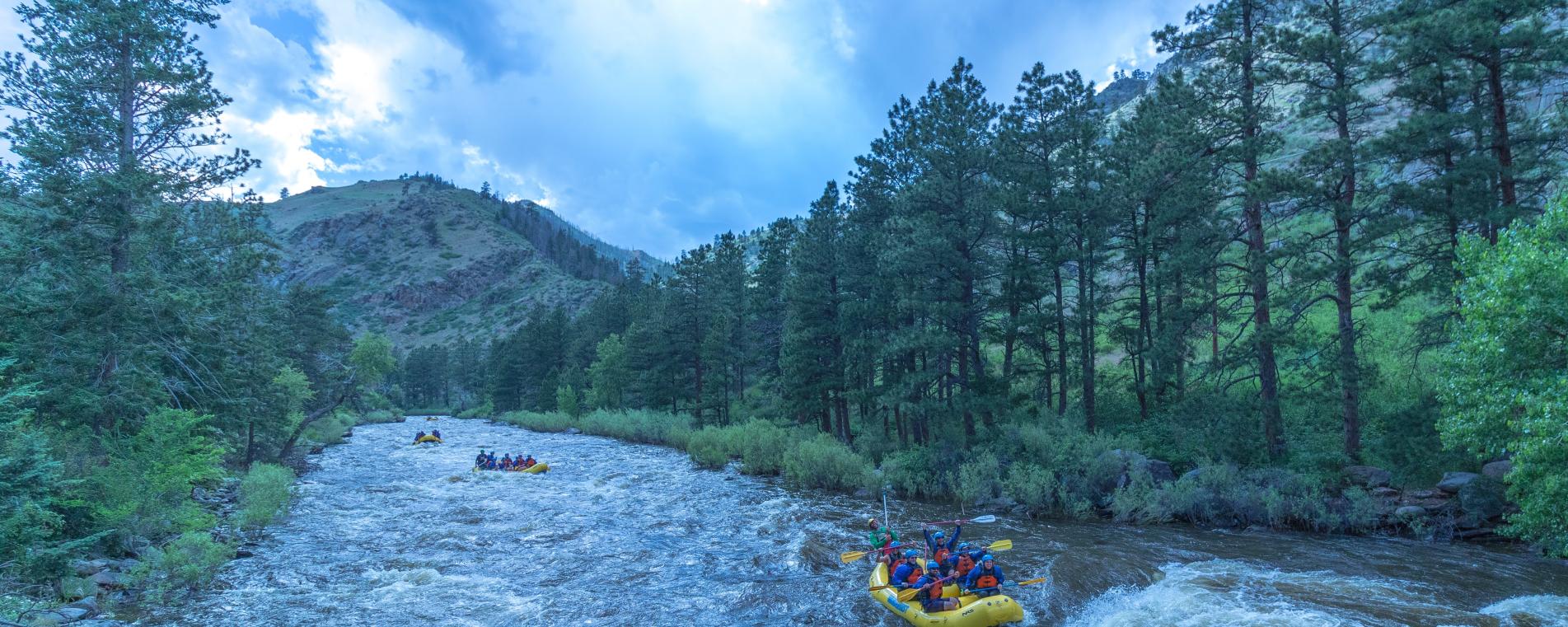The Ultimate Experience: Water Rafting Idea
Starting a water rafting journey is an exhilarating experience that demands a mix of skill, preparation, and regard for nature's formidable forces (White Water Rafting Colorado). As the thrill of the river pushes you forward, browsing with weaves, the art of water rafting unveils itself as an examination of both physical prowess and psychological acuity. From selecting the ideal gear to understanding the subtleties of paddling techniques, the trip down the river holds challenges and accomplishments waiting to be dominated. But what absolutely distinguishes a novice from a skilled rafter lies not simply in the proficiency of skills, yet in the finesse with which one comes close to the unpredictable dancing with the currents.
Necessary Gear for Water Rafting
To guarantee safety and comfort during water rafting trips, it is necessary to outfit oneself with the essential gear customized to this daring task. Furthermore, a durable safety helmet is vital to secure against head injuries, especially in rough waters or if tossed off the plethora.
Additionally, appropriate footwear is vital for maintaining great grip and securing the feet from sharp rocks or slippery surfaces. Neoprene booties or water footwear are recommended for this purpose. It is also suggested to put on quick-drying garments, such as a wetsuit or rash guard, to regulate body temperature level and stop hypothermia in chilly water conditions.
Last but not least, a trusted paddle is essential for navigating with the water effectively. It needs to be light-weight yet resilient to withstand the roughness of rafting. By buying these essential items of gear, rafters can appreciate their experience on the water with confidence and assurance.
Selecting the Right Rafting Route
When intending a water rafting experience, picking the proper rafting route is critical for a satisfying and safe experience. Aspects such as the degree of problem, water problems, and the length of the path should all be thought about before beginning on your trip.
Most importantly, analyze your team's skill level and experience. Different rafting paths are classified based upon trouble degrees varying from Course I (easy) to Class VI (very hard and dangerous) It is necessary to choose a path that lines up with the capabilities of all participants to ensure everybody's security and enjoyment.
Additionally, consider the water conditions of the route. Some courses might have tranquil waters ideal for newbies, while others might have strong currents and difficult rapids that need advanced abilities. Looking into the water degrees and prospective risks of the path in advance can assist you make a notified decision.
Lastly, consider the size of the rafting course. Longer Get More Information courses might need more time and endurance, so pick a path that fits within your group's timeframe and physical abilities. By thoroughly choosing the right rafting route, you can establish on your own up for a remarkable and exhilarating journey on the water.
Security Safety Measures on the Water
Thinking about the value of picking the appropriate rafting route for a safe and pleasurable experience, it is necessary to focus on safety and security preventative measures on the water to minimize possible threats and make certain an effective journey. Prior to getting started on a water rafting journey, make sure all individuals use appropriately suitable personal flotation tools (PFDs) and headgears to protect versus accidents. By adhering to these safety and security preventative measures, you can enhance the total experience and decrease possible threats while water rafting.
Understanding Paddling Strategies
Establishing efficiency in paddling techniques is important for navigating via differing water conditions and guaranteeing a successful water rafting experience. White Water Rafting Colorado. Correct paddling not just helps in guiding the plethora efficiently but additionally adds to the overall control and team effort required for a pleasurable and safe trip
One of the basic paddling methods is the forward stroke. This stroke involves dipping the paddle blade totally into the water and drawing it back together with the raft, supplying propulsion and steering. The in reverse stroke, on the other hand, is critical for slowing down or turning around down the boating. By understanding the forward and backwards strokes, rafters can effectively manage the speed and instructions of the raft.

Tips for Handling Rapids Like a Pro
To master browsing challenging river problems, experienced water rafters apply their grasped paddling strategies with precision and skill when taking care of rapids like experienced experts. When facing rapids, it is crucial to preserve a strong and collaborated paddling rhythm. This rhythm aids the raft maintain its click course and stability in the middle of the stormy waters. Additionally, it is important to anticipate the motions of the boating and adjust quickly to changing conditions. Experienced rafters use their understanding of river characteristics to proactively readjust their paddling technique, guaranteeing effective steering via rapids.

Verdict
In final thought, water rafting needs necessary equipment, mindful path selection, safety and security precautions, grasping paddling techniques, and handling rapids with experience. By complying with these techniques and pointers, adventurers can make certain a pleasurable and effective rafting experience on the water.

Taking into consideration the relevance of choosing the best rafting course for a risk-free and enjoyable experience, it is vital to prioritize safety and security precautions on the water to mitigate prospective dangers and make certain a successful adventure. Eventually, developing paddling strategies click here for more is essential to a awesome and successful water rafting experience.
In verdict, water rafting needs crucial gear, mindful route option, safety precautions, understanding paddling strategies, and taking care of rapids with experience.